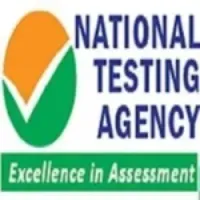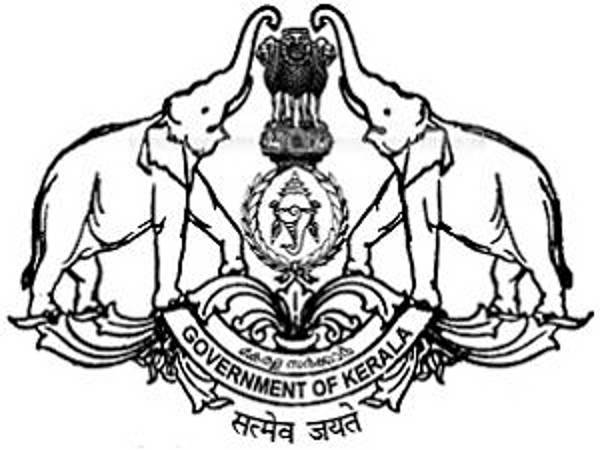Latest Applications Open 2024:
The National Testing Agency, shortly known as NTA, conducted the GPAT 2024 Examination, commonly known as the Graduate Pharmacy Aptitude Test. Many candidates may appear for this examination every year.
Candidates interested in getting admission to the medical courses can fill out the application form for GPAT. The candidates will be eligible for the counselling procedure through this examination result.
Here, through this article, the candidates will be able to know the complete information about the GPAT, including the GPAT Syllabus.
Latest Applications For Various UG & PG Courses Open 2024
-
- Parul University | Admissions Open for All Courses 2024. Apply Now
- Chandigarh University | Admissions Open for All Courses 2024. Apply Now
- NIIT | Admissions Open for All Courses 2024. Apply Now
- KL University | Admissions Open for All Courses 2024. Apply Now
- Alliance UG | Admissions Open for All Courses 2024. Apply Now
- GD Goenka | Admissions Open for All Courses 2024. Apply Now
GPAT Syllabus 2024
Those candidates participating in the GPAT examination must pick the syllabus and exam pattern for better preparation. It would be too beneficial for candidates to know the questions and answer details to write in the examination.
Physical Chemistry
- Composition & physical states of matter
- Colligative Properties
- Thermodynamics
- Refractive index
- Solutions
- Electrochemistry
- Ionic equilibrium
- Kinetics
Physical Pharmacy
- Matter, properties of matter
- Micromeritics and powder rheology
- Surface and interfacial phenomenon
- Viscosity and rheology
- Dispersion systems
- Complexation
- Buffer
- Solubility
Organic Chemistry
- General principles
- Different classes of compounds
- Protection & deprotection of groups
- Aromaticity & aromatic chemistry
- Different aromatic classes of compounds
- Polycyclic aromatic hydrocarbons
- Carbonyl Chemistry
- Heterocyclic Chemistry
- Bridged rings
- Kinetic & thermodynamic control
- Stereochemistry
- Carbohydrates
- Amino acids & proteins
- Pericyclic reactions
Pharmaceutical Chemistry
- Pharmaceutical Impurities
- Monographs
- Isotopes
- Dentifrices, desensitizing agents, & anticaries agents
Medical Chemistry
Latest Applications For Various UG & PG Courses Open 2024
-
- Parul University | Admissions Open for All Courses 2024. Apply Now
- Chandigarh University | Admissions Open for All Courses 2024. Apply Now
- NIIT | Admissions Open for All Courses 2024. Apply Now
- KL University | Admissions Open for All Courses 2024. Apply Now
- Alliance UG | Admissions Open for All Courses 2024. Apply Now
- GD Goenka | Admissions Open for All Courses 2024. Apply Now
- Therapeutic classes of drugs
- Various classes of therapeutic agents
- Different classes of therapeutic drugs
- Different classes of therapeutic drugs
Pharmaceutics
- Pharmacy Profession & Introduction to Pharmaceuticals
- Introduction to the dosage form
- Sources of drug information
- Allopathic dosage form
- Crude extract
- Allergenic extract
- Biological products
- Pharmaceutical Plant, location, layout
- Dosage Form Necessities and Additives
- Powders
- Capsules
- Tablets
- Parenteral – product requiring sterile packaging
- Suspensions
- Emulsions
- Suppositories
- Semisolids
- Liquids (solutions, syrups, elixirs, spirits, aromatic water, liquid for external uses)
- Pharmaceutical Aerosols
- Ophthalmic preparations
- Pre formulation
- Stability of formulated products
- Prolonged Action Pharmaceuticals
- Novel Drug delivery system
- GMP and Validation
- Packaging Materials
- Cosmetics
- The pilot plant scale-up techniques
Pharmacology
- General Pharmacology
- Neurohumoral transmission in the autonomic and central nervous system:
- Pharmacology of the peripheral nervous system
- Pharmacology of the cardiovascular system
- Pharmacology of the cardiovascular system
- Drugs acting on the urinary system
- Drugs Acting on the Respiratory System
- Pharmacology of the Central Nervous System
- Pharmacology of the Endocrine System
- Chemotherapy
- Pharmacology of drug acting on the gastrointestinal tract
- Chronopharmacology
- Immunopharmacology
- Vitamins & Minerals
- Principles of toxicology
Pharmacognosy
- Introductory Pharmacognosy
- Classification of crude drugs
- Factors influencing the quality of crude drugs
- Techniques in microscopy
- Introduction to phytoconstituents
- Principles of plant classification
- Pharmaceutical aids
- Animal products
- Plant products
- Toxic drugs
- Enzymes
- Natural pesticides and insecticides
- Adulteration and evaluation of crude drugs
- Quantitative microscopy
- Biogenetic pathways
- Carbohydrates & lipids
- Tannins
- Volatile Oils
- Resinous drugs
- Glycosides
- Alkaloids
- Extraction and Isolation Techniques
- Phytopharmaceuticals
- Quality control and standardization of herbal drugs
- Herbal formulations
- The Worldwide trade of crude drugs and volatile oils
- Herbal cosmetics
- Traditional herbal drugs
- Plants-based industries and research institutes in India
- Patents
- Ayurvedic system of medicine
- Homoeopathic system of medicine
Pharmaceutical Analysis
- Importance of quality control in Pharmacy
- Acid-base titrations
- Non-aqueous titrations
- Oxidation-reduction titrations
- Precipitation titrations
- Complexometric titrations
- Gravimetry
- Extraction techniques
- Potentiometry
- Miscellaneous Methods of Analysis
- Calibration
- General Principles of Spectroscopy
- Ultraviolet-visible Spectrometry
- Spectrofluorimetry
- Flame photometry & atomic absorption spectrometry
- Infrared spectrometry
- Proton nuclear magnetic resonance spectrometry
- Mass spectrometry
- Polarography
- Nephelometry & Turbidimetry
- Chromatography
- Miscellaneous
Biochemistry
- Cell
- Carbohydrates
- Proteins
- Lipids
- Vitamins
- Biological oxidations & reductions
- Enzymes
- Nucleic acids
- Hereditary diseases
Biotechnology
- Plant Cell and Tissue Culture
- Animal Cell Culture
- Fermentation Technology and Industrial Microbiology
- Recombinant DNA Technology
- Process and Applications
- Biotechnology-Derived Products
Microbiology
- Introduction to Microbiology
- Microscopy and staining technique
- Biology of Microorganisms
- Fungi and Viruses
- Aseptic Technique
- Sterilization & Disinfection
- Microbial spoilage
- Vaccines & Sera
- Microbial Assay
Photophysiology
- Basic Principles of Cell Injury and Adaptation
- Basic mechanisms of inflammation and repair
- Disorders of fluid, electrolyte, and acid-base balance
- Disorders of homeostasis: white blood cells, lymphoid tissues, and
red blood cell-related diseases. - Immunopathology including amyloidosis
- Infectious diseases
- Neoplastic diseases
- Pathophysiology of common diseases
- Laboratory tests for Liver function tests and kidney function tests
Biopharmaceutics And Pharmacokinetics
- Bio-pharmaceutics
- Bio-availability & Bio-equivalence
- Biopharmaceutical statistics
Clinical Pharmacy And Therapeutics
- General Principles, preparation, maintenance, and Analysis of observational records in clinical Pharmacy.
- Clinical trials, type, phases of clinical trials, placebo, ethical and regulatory issues, including Good clinical practice in clinical trials.
- Therapeutic drug monitoring, adverse drug reaction (ADR), types of ADR, Mechanism of ADR. Drug interaction, Monitoring, and reporting of ADR and its significance.
- Drug information services, Drug interactions.
- Drug interaction in pediatric and geriatric patients, drug treatment during pregnancy, lactation, and menstruation.
- Pharmacovigilance, Therapeutic drug monitoring, Neutraceuticals, essential drugs, and rational drug usage.
- Age-related drug therapy: posology, drug therapy for neonates, paediatrics, and geriatrics. Drugs used in pregnancy and lactation.
- Drug therapy in gastrointestinal, hepatic, renal, cardiovascular, and respiratory Disorders.
- Drug therapy for neurological and psychological disorders.
- Drug therapy in infections of the respiratory system, urinary system, and infective meningitis infections, TB, HIV, malaria, and filaria.
- Drug therapy for thyroid and parathyroid disorders, diabetes mellitus, menstrual cycle disorders, menopause, and male sexual dysfunction.
- Drug therapy for malignant disorders like leukaemia, lymphoma, and solid tumours.
- Drug therapy for rheumatic, eye, and skin disorders.
Anatomy, Physiology And Health Education
- Cell physiology
- The Blood
- Gastrointestinal tract
- Respiratory System
- Autonomic nervous system
- Sense organs
- Skeletal System
- Central Nervous system
- Urinary System
- Endocrine Glands
- Reproductive System
- Cardiovascular system
- Lymphatic system
Pharmaceutical Engineering
- Fluid flow
- Heat transfer
- Evaporation
- Distillation
- Drying
- Size reduction and size separation
- Extraction
- Mixing
- Crystallization
- Filtration and Centrifugation
- Dehumidification and humidity control
- Refrigeration and air conditioning
- Material of constructions
- Automated process control systems
- Industrial Hazards & Safety Precautions
Pharmaceutical Management
- Introduction to management
- Planning and Forecasting
- Organization
- Research Management
- Inventory Management
- Communication
- Marketing Research
- Leadership and motivation
- Human resource and development (HRD)
- GATT
- World Trade Organization (WTO) and trade-related intellectual property rights (TRIPS)
- Standard institutions and regulatory authorities
Pharmaceutical Jurisprudence
- Historical background Drug legislation in India, Code of Ethics for Pharmacists.
- The Pharmacy Act 1948 (inclusive of recent amendments).
- Drugs and Cosmetics Act 1940, Rules 1945, including New Drug applications.
- Narcotic Drugs and Psychotropic Substances Act, and Rules thereunder.
- Drugs and Magic Remedies (Objectionable Advertisements) Act 1954.
- Medicinal and Toilet Preparations (Excise Duties) Act 1955, Rules 1976.
- Medical Termination of Pregnancy Act 1970 and Rules 1975.
- Prevention of Cruelty to Animals Act 1960.
- Drug (Price Control) Order.
- Shops and Establishment Act.
- Factory Act.
- Consumer Protection Act.
- Indian Pharmaceutical Industry- An Overview.
- Industrial Development and the Regulation Act of 1951.
- Introduction to Intellectual Property Rights and the Indian Patent Act 1970.
- An Introduction to Standard Institutions and Regulatory Authorities such as BIS, ASTM, ISO, TGA, USFDA, MHRA, ICH, and WHO.
- Minimum Wages Act of 1948.
- Prevention of Food Adulteration Act 1954 and Rules
Dispensing & Hospital Pharmacy
Introduction to laboratory equipment, weighting methodology, handling of prescriptions, and labelling instructions for dispensed products.
Posological calculations involved the calculation of dosage for infants. Enlarging
and reducing formula, displacement value.
Preparations of formulations involving allegation, alcohol dilution, and isotonic solution.
Study of current patent and proprietary products, generic products and selected brand products, indications, contraindications, adverse drug reactions, available dosage forms and packing of,
- Antihypertensive drug
- Antiamoebic drugs
- Antihistaminic drugs
- Antiemetic drugs
- Antacids and ulcer healing drugs.
- Antidiarrheals and laxatives
- Respiratory drugs
- Antibiotics
- Analgesics and antipyretic drugs.
Compounding and dispensing of the following prescriptions
- Mixtures
- Solutions
- Emulsions
- Lotions (External preparations)
- Liniments (External preparations)
- Powder
- Granules
- Suppositories
- Ointments / Paste
- Cream
- Incompatibility: Prescription based on physical, chemical, and therapeutic
incompatibility. Tablets - Inhalations
Reading and counselling of prescriptions from the clinical practice.
- Designing from mock Pharmacy: Layout and structure of retail Pharmacy, compounding, dispensing, storing, labelling, pricing, recording and counselling of
prescription. - Procurement of information for the given drug for drug information services.
- Preparation of Hospital Formulary.
If you have any queries regarding the GPAT 2024 Syllabus, you can ask your query in the comments section below.

As a dedicated Biology Science graduate, I’m passionate about sharing the latest updates in national and state entrance exams through my blog. I aim to keep aspiring students informed about exam trends, important dates, and changes in syllabi. With a keen interest in education, I strive to offer valuable insights for students navigating the competitive landscape of entrance examinations and admission tests. Stay updated with me.

